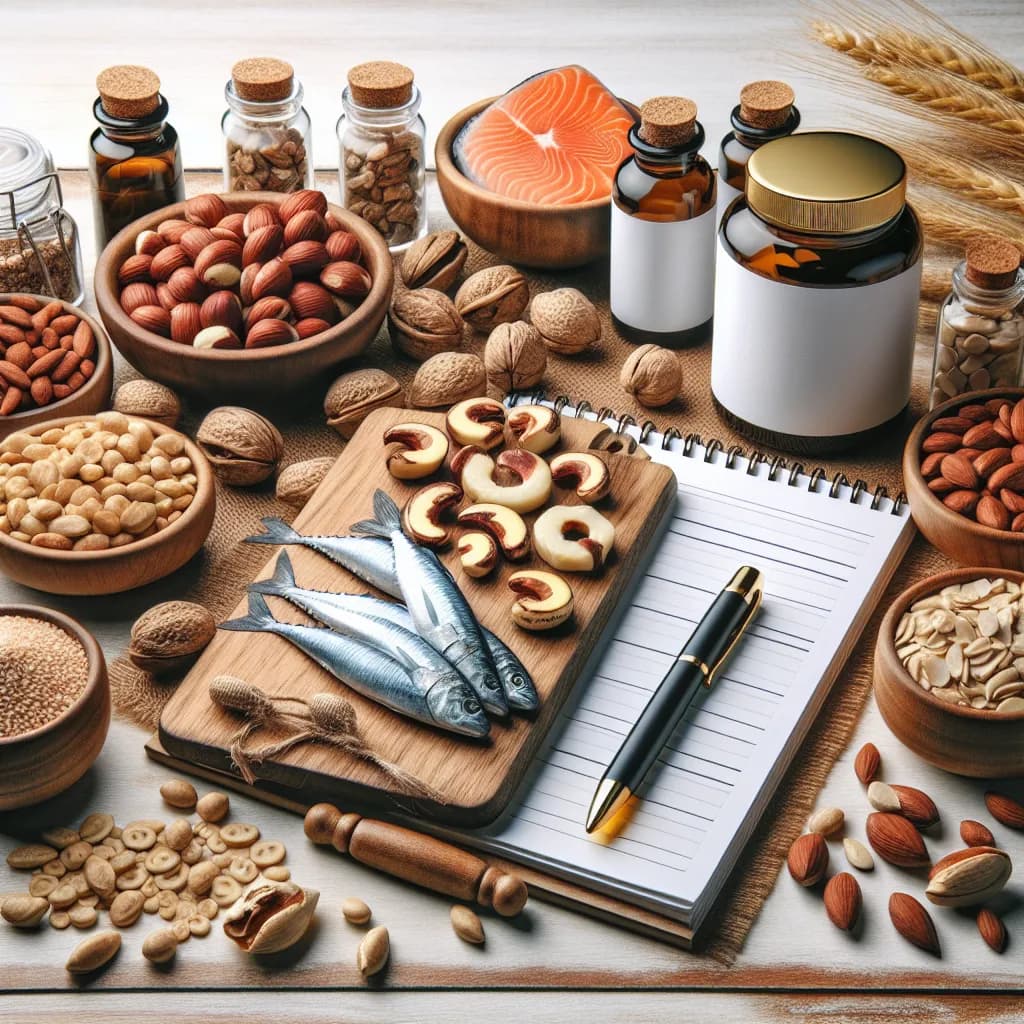Unmasking Iron Deficiency: Spot the Silent Symptoms Now!

The Iron Giant: A Comprehensive Guide to Iron Deficiency Symptoms
Introduction
Picture yourself as a car. Your engine runs smoothly with the right type of fuel. But imagine if you switched to low-grade fuel. Your engine would sputter, and performance would dip. Iron is like high-grade fuel for the human body. It keeps us running at peak performance. But what happens when we run low on this vital nutrient? We're here to answer that, and more, as we deep dive into iron and its deficiency symptoms.
What is Iron?
Iron is a vital mineral that our bodies need to function correctly. It is a key component of hemoglobin, the protein in red blood cells that carries oxygen from the lungs to the rest of the body[1].
There are two types of dietary iron: heme and non-heme. Heme iron is found in animal-based foods like meat, poultry, and fish. Non-heme iron comes from plant-based sources like lentils and beans[2].
Benefits of Iron
Iron is like the Lebron James of nutrients – it's involved in everything! It helps maintain healthy cells, skin, hair, and nails[3]. It's also critical for cognitive function, especially in children[4].
According to a study published in the Journal of Nutrition, iron supplementation improved cognitive performance and endurance capacity in iron-deficient adults[5].
How to Use Iron Effectively
Think of iron like a hot fudge sundae – it's best served with a cherry on top. That cherry is Vitamin C, which enhances iron absorption[6]. Aim to consume 8-18mg of iron per day, depending on your age, sex, and overall health[7].
Iron supplements are available in various forms, including tablets, capsules, and liquid drops. However, always consult with a healthcare provider before starting any supplementation regimen.
Potential Side Effects and Considerations
The saying "too much of a good thing" holds true for iron. Overconsumption can lead to constipation, nausea, and, in severe cases, iron toxicity[8].
People with certain health conditions, such as hemochromatosis, should be cautious with iron supplementation. This condition causes the body to absorb too much iron, leading to organ damage[9].
Frequently Asked Questions
- Can I get enough iron from my diet?
Yes, a balanced diet can provide sufficient iron. Foods rich in iron include red meat, poultry, beans, and fortified cereals[10].
- What are the symptoms of iron deficiency?
Common symptoms include fatigue, weakness, pale skin, and a decreased ability to concentrate[11].
Conclusion
Iron is more than just a heavy metal – it's a vital nutrient that keeps our bodies running like well-oiled machines. But when we're running low, the effects can be as noticeable as a car running on fumes. By knowing the signs of iron deficiency and how to manage it, you can keep your engine purring and your body performing at its best.
References
[1]: Beard JL. (2001). Iron Biology in Immune Function, Muscle Metabolism and Neuronal Functioning. Journal of Nutrition. https://doi.org/10.1093/jn/131.2.568S
[2]: Hurrell R, Egli I. (2010). Iron bioavailability and dietary reference values. American Journal of Clinical Nutrition. https://doi.org/10.3945/ajcn.2010.28674F
[3]: Trost LB, et al. (2006). The diagnosis and treatment of iron deficiency and its potential relationship to hair loss. Journal of the American Academy of Dermatology. https://doi.org/10.1016/j.jaad.2005.11.1100
[4]: Lozoff B, et al. (2006). Iron deficiency and child development. Food and Nutrition Bulletin. https://doi.org/10.1177/15648265060273S409
[5]: Murray-Kolb LE, Beard JL. (2007). Iron treatment normalizes cognitive functioning in young women. American Journal of Clinical Nutrition. https://doi.org/10.1093/ajcn/85.3.778
[6]: Hallberg L, et al. (1989). The role of vitamin C in iron absorption. International Journal for Vitamin and Nutrition Research. https://pubmed.ncbi.nlm.nih.gov/2700247/
[7]: Institute of Medicine. (2001). Dietary Reference Intakes for Vitamin A, Vitamin K, Arsenic, Boron, Chromium, Copper, Iodine, Iron, Manganese, Molybdenum, Nickel, Silicon, Vanadium, and Zinc. https://pubmed.ncbi.nlm.nih.gov/25057538/
[8]: Andrews NC. (1999). Disorders of iron metabolism. New England Journal of Medicine. https://doi.org/10.1056/NEJM199912233412607
[9]: Pietrangelo A. (2004). Hereditary hemochromatosis: pathogenesis, diagnosis, and treatment. Gastroenterology. https://doi.org/10.1053/j.gastro.2010.06.013
[10]: Hurrell R, Egli I. (2010). Iron bioavailability and dietary reference values. American Journal of Clinical Nutrition. https://doi.org/10.3945/ajcn.2010.28674F
[11]: Killip S, et al. (2007). Iron deficiency anemia. American Family Physician. https://www.aafp.org/afp/2007/0301/p671.html
Disclaimer: This article is intended for informational purposes only. The content is not intended to be a substitute for professional medical advice, diagnosis, or treatment. Always seek the advice of your physician or other qualified health provider with any questions you may have regarding a medical condition.
Disclaimer: This article is AI-generated for educational purposes only and is not a substitute for professional medical advice. Always consult with a healthcare provider before starting any supplement regimen.
Explore More Resources
Disclaimer: This article is AI-generated and for informational purposes only. While we strive for accuracy, the content may contain errors or omissions.
The information provided is not medical advice. Always consult with healthcare professionals before starting any supplement regimen or making changes to your health routine.
Important: The information provided in this article about supplements is for educational purposes only. It is not intended to diagnose, treat, cure, or prevent any disease.
FDA Disclaimer: These statements have not been evaluated by the Food and Drug Administration. Supplements are not intended to diagnose, treat, cure, or prevent any disease.
Related Articles

Unveiling Iron: Interactions with Medications Unmasked
Discover the untold truth about Iron interactions with medications. Unlock health secrets and safeguard your well-being with our in-depth article.

Unmasking Selenium: Spotting Deficiency Symptoms & Restoring Balance
Discover the role of Selenium in your health! Spot deficiency symptoms and learn how to restore balance naturally. Unmask Selenium with us today!

Unlocking Wellness: The Amazing Benefits and Uses of Vitamin K2
Explore the remarkable world of Vitamin K2! Discover its amazing benefits and uses for overall wellness. Don't miss out on this health-boosting secret!